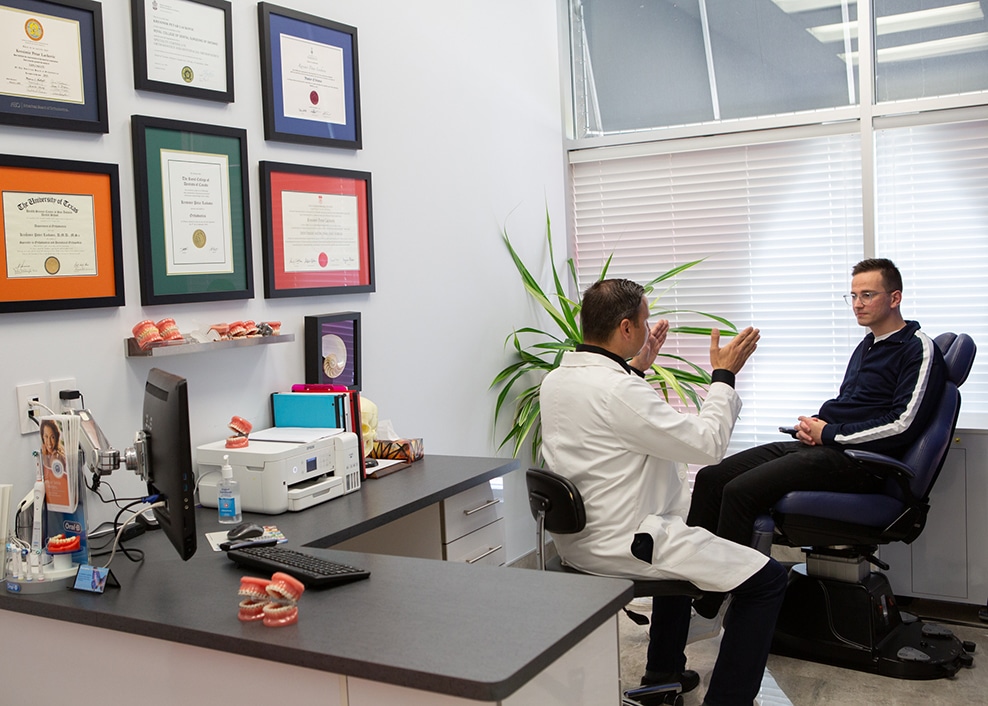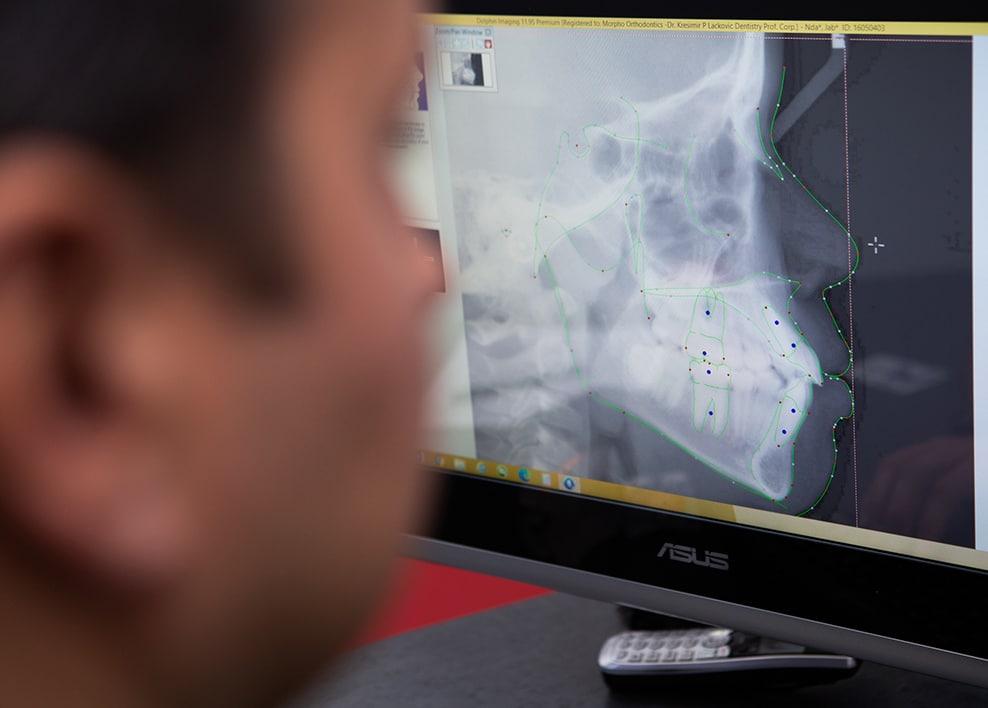When might surgical orthodontics be needed?
Surgical orthodontics, also known as orthognathic surgery, is a type of orthodontic treatment used to correct severe cases that include bad bites, jaw bone abnormalities, and malocclusion. Oral and maxillofacial surgery is one of the nine dental specialties, and it focuses on treating complex craniofacial cases that involve the mouth, jaw, face, and skull. Your orthodontist will work with an oral and maxillofacial surgeon to ensure that, if you need surgical orthodontics, you receive the best care possible.
Surgical orthodontics may be used to treat adults with improper bites or other aesthetic concerns. Typically, jaw growth stops by age 16 in females and 18 in males. In order to receive orthognathic surgery, the jaw must be done growing. The need for surgical orthodontics occurs when the jaws do not line up correctly, and a proper bite cannot be achieved with orthodontic treatment alone. Orthognathic surgery will properly align the jaw, and orthodontic braces will move the teeth into their proper position.

How do I know if I need orthognathic surgery and how does it work?
Your orthodontist can tell you if orthognathic surgery is needed as part of your treatment. Depending on the severity of your case and the alignment of your jaw, you may or may not need surgery.
An oral and maxillofacial surgeon will perform your orthognathic surgery, which will take place in a hospital. Orthognathic surgery can take several hours depending on each individual case. Once the surgery is complete, you will have about a two-week rest period.
Since orthognathic surgery is a major treatment, we recommend you schedule some time away from work and school for the healing process. After your jaw has healed, your orthodontist will once again “fine-tune” your bite. After surgery, you will have to wear braces. Most braces are removed within six to 12 months following surgery. After your braces are removed, you will wear a retainer to help maintain your new smile.
What are the risks associated with orthognathic surgery?
As with any major medical surgery, there may be certain risks to undergoing orthognathic surgery. However, the process of orthognathic surgery is not new, and it has been performed for many years in clinics and hospitals. If you’re concerned about an upcoming treatment with orthognathic surgery, please contact our practice and let us know. We are happy to answer any questions you may have, and provide you with additional information. Your comfort is important to us.
What are the rewards of having orthognathic surgery?
For many patients, the most important reward of having orthognathic surgery is achieving a beautiful, healthy smile that lasts a lifetime. Whether you need orthodontic treatment to correct a bad bite, malocclusion, or jaw abnormality, orthognathic surgery can help restore your confidence and leave you smiling with confidence for many years to come.

What types of bites may benefit from jaw surgery?
For patients with a short lower jaw bone (Mandible) the chin may appear set back or weak in appearance. This short lower jaw bone typically results in excessive space between the top and bottow front teeth and they do not touch when the patient bites down normally. To correct this, the Oral Surgeon would surgically reposition the lower jaw forward and bring balance to facial profile and allow all the teeth to touch ideally when the patient bites down.
Another jaw size imbalance is caused by excessive lower jaw bone growth, causing an underbite. In this situation it is impossible for people to bite with their front teeth (depending on the severity) as they cannot touch. To correct this jaw size discrepancy the Oral Surgeon would shorten the lower jaw bone and in essence push it backwards.
Some people show excessive ginival tissue both at rest and when they smile (gummy smile). This may be caused by a number of factors. If it is due to excessive downward growth of the top jawbone (Maxilla), then that jawbone can be reposition upwards to give a more pleasing appearance. Watch the video which shows how this can be accomplished.


